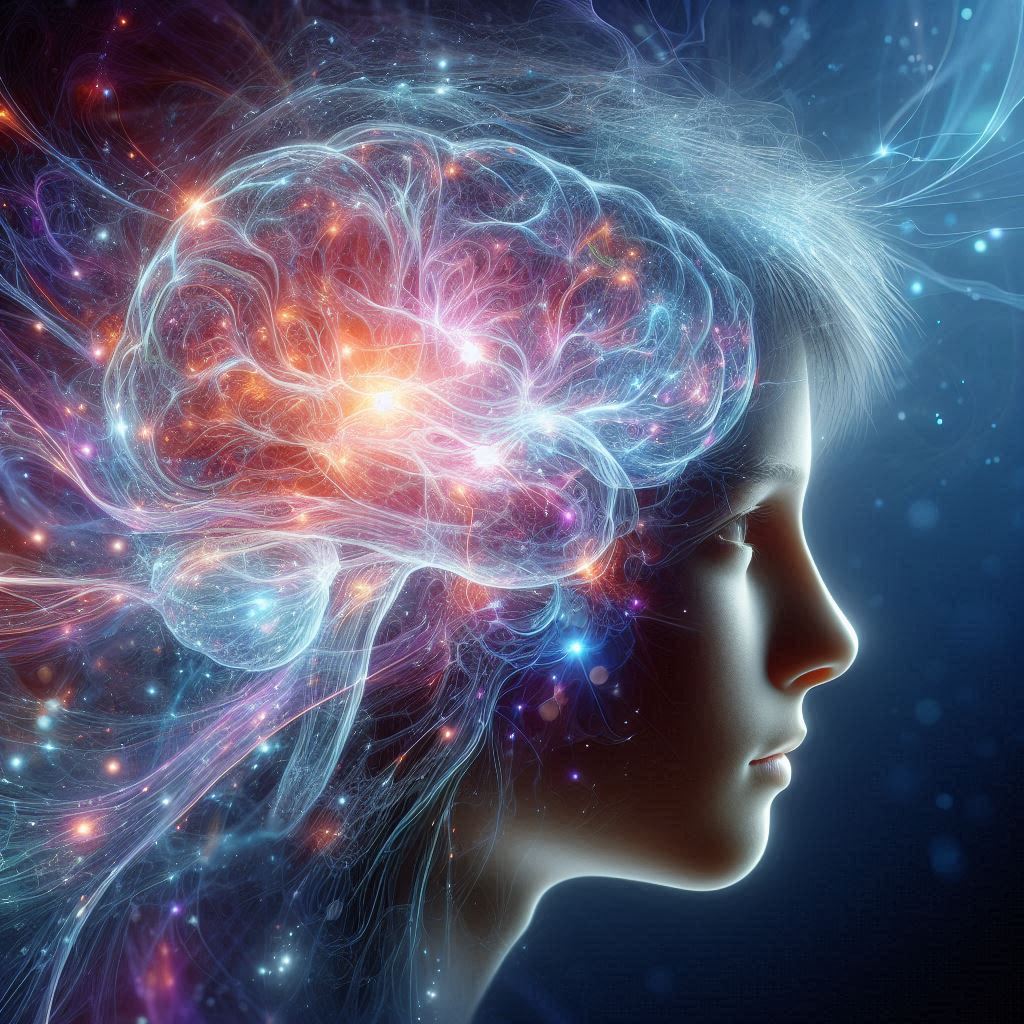Adolescence is one of the most fascinating and transformative stages in human life. It is a period marked by emotional turbulence, risk-taking, self-discovery, and social exploration. Beneath the visible changes in behavior, mood, and identity lies a dramatic neurological transformation: the teenage brain. The brain of an adolescent is not merely a smaller version of an adult brain—it is a dynamic, evolving organ undergoing profound structural and functional changes that shape who we become as adults.
Understanding the teenage brain is not only crucial for parents, teachers, and caregivers, but also for teenagers themselves. The behaviors often associated with adolescence—impulsivity, mood swings, sensitivity to peer influence, and a hunger for novelty—are not signs of irrationality or rebellion, but reflections of a brain in rapid development. This stage sets the foundation for lifelong patterns of thought, emotion, and behavior. Modern neuroscience reveals that the teenage brain is a masterpiece in progress, balancing plasticity and vulnerability in equal measure.
The Developmental Landscape of the Adolescent Brain
Human brain development begins long before birth, but it continues far into the mid-twenties. The brain’s maturation follows a sequence, starting from the back and moving toward the front. By the time children reach puberty, most of the brain’s physical growth is complete, yet its internal wiring—its neural connections and communication networks—is still under construction.
During adolescence, the brain undergoes extensive remodeling. Neural connections are strengthened or pruned based on use, efficiency, and experience. This process, known as synaptic pruning, is a critical step toward making the brain more efficient. The adolescent brain eliminates weaker neural pathways and strengthens those that are repeatedly used, effectively shaping the mind based on the individual’s environment, learning, and choices.
At the same time, another vital process, myelination, continues to progress. Myelin is a fatty substance that wraps around nerve fibers, allowing signals to travel faster and more efficiently between neurons. The ongoing myelination of neural circuits enhances processing speed, decision-making, and coordination. However, this process unfolds unevenly across different regions of the brain, with crucial implications for teenage behavior.
The last region to fully mature is the prefrontal cortex—the seat of reasoning, planning, impulse control, and judgment. This delay means that during adolescence, the emotional centers of the brain, such as the amygdala and nucleus accumbens, often dominate behavior before the rational brain has fully developed. The result is a brain wired for exploration, passion, and experimentation—but also for risk.
The Role of the Prefrontal Cortex
The prefrontal cortex, located at the front of the brain, is responsible for executive functions: making plans, suppressing inappropriate actions, focusing attention, evaluating risks, and predicting outcomes. In adults, this region acts as the brain’s control center, integrating information from other areas to guide reasoned behavior.
In teenagers, however, the prefrontal cortex is still maturing. The incomplete development of this region contributes to the impulsivity and emotional reactivity typical of adolescence. Teenagers may act on emotions or impulses before fully considering the consequences, not because they lack intelligence, but because the neural systems for inhibition and long-term thinking are still developing.
This developmental gap explains why adolescents are more likely to engage in high-risk behaviors such as speeding, experimenting with substances, or making spontaneous decisions in emotionally charged situations. It also explains why they may struggle with long-term planning, time management, or understanding abstract consequences. However, this same plasticity allows for incredible learning potential. The teenage brain is capable of creativity, adaptability, and resilience unmatched in adulthood.
The Limbic System and Emotional Intensity
While the prefrontal cortex is still developing, the limbic system—the brain’s emotional center—is in overdrive during adolescence. This system, which includes the amygdala, hippocampus, and nucleus accumbens, governs emotions, memory, and reward processing. It becomes highly sensitive to stimulation, particularly to rewards and social cues.
The amygdala, which helps process emotional responses, is more reactive in teenagers than in adults. This increased sensitivity can amplify emotional experiences, leading to more intense highs and lows. It also contributes to greater emotional volatility, making adolescents more reactive to stress, criticism, or social rejection.
The nucleus accumbens, a key structure in the brain’s reward system, releases dopamine in response to pleasurable experiences. During adolescence, dopamine activity peaks, driving a heightened desire for novelty, excitement, and social reward. This surge in dopamine makes rewarding experiences—such as friendship, music, or risk-taking—especially powerful. However, it can also increase susceptibility to addiction, as the teenage brain learns rapidly from rewarding stimuli.
The imbalance between a hyperactive limbic system and an underdeveloped prefrontal cortex creates what neuroscientists call the “mismatch” effect. Teenagers are wired for sensation and emotion, but their regulatory systems have not yet caught up. This mismatch does not represent a flaw but rather an adaptive phase of development that encourages exploration and independence.
Hormonal Changes and Their Influence on the Brain
The onset of puberty triggers a flood of hormones that affect not only the body but also the brain. Hormones such as estrogen and testosterone influence brain structure, connectivity, and neurotransmitter activity. These hormonal changes enhance emotional intensity, increase sensitivity to social dynamics, and influence sexual attraction and motivation.
In addition, puberty affects the brain’s circadian rhythms—the internal clock that regulates sleep and wake cycles. Teenagers experience a natural shift toward later sleep times and later wake times, often conflicting with early school schedules. This mismatch between biological and societal timing can lead to chronic sleep deprivation, which impairs attention, memory, mood regulation, and academic performance.
The interaction between hormones and brain development makes adolescence a time of both opportunity and vulnerability. The hormonal influence amplifies emotional and social experiences, making peer relationships, status, and belonging profoundly important. While this can foster empathy and social learning, it also increases susceptibility to stress, anxiety, and depression.
The Social Brain: Peer Influence and Identity Formation
Adolescence is a period when social connections take center stage. The teenage brain becomes finely tuned to social feedback, peer approval, and group belonging. This shift is not merely psychological—it has deep neurological roots.
Brain imaging studies show that areas associated with social cognition, such as the medial prefrontal cortex and the superior temporal sulcus, become more active during adolescence. These regions help interpret facial expressions, social cues, and others’ emotions. The heightened sensitivity to social evaluation encourages teenagers to adapt, learn social norms, and develop their identities within a peer context.
Peer influence during adolescence is powerful because it activates the brain’s reward circuitry. Being accepted by peers releases dopamine, reinforcing behaviors that lead to social approval. Conversely, social exclusion triggers pain-related brain regions, making rejection emotionally distressing. This heightened social sensitivity is evolutionarily adaptive—it prepares young individuals to navigate complex social environments and form bonds outside their immediate families.
However, the same sensitivity can lead to conformity and risky behavior when peer pressure conflicts with good judgment. The teenage drive for acceptance often outweighs rational decision-making, especially when peers are watching. Yet, this social engagement also fuels learning, cooperation, and empathy, laying the groundwork for adult social competence.
The Role of Sleep in Adolescent Brain Development
Sleep is a vital ingredient in brain development, particularly during adolescence. It is during sleep that the brain consolidates learning, processes emotions, and restores its chemical balance. Teenagers require about eight to ten hours of sleep each night, but studies show that most get far less.
Biological changes during puberty delay the release of melatonin, the hormone that signals sleepiness, leading to later bedtimes. Combined with early school start times, this creates a sleep deficit that can impair attention, memory, emotional regulation, and decision-making. Chronic sleep deprivation during adolescence is linked to mood disorders, poor academic performance, and even increased risk-taking.
Neuroscience research underscores the importance of adequate sleep for the adolescent brain’s health and resilience. During deep sleep, the brain prunes unnecessary connections and strengthens essential neural circuits, especially in the prefrontal cortex. Thus, consistent and sufficient sleep is critical for cognitive and emotional maturation.
The Impact of Technology and Digital Media
Modern teenagers grow up in a world saturated with digital technology. Smartphones, social media, and instant communication have fundamentally changed how adolescents interact, learn, and perceive the world. While technology offers vast opportunities for creativity, connection, and education, it also poses unique challenges to the developing brain.
The constant influx of digital stimuli can overstimulate the brain’s reward pathways. Social media, for instance, provides intermittent rewards through likes, comments, and notifications, reinforcing frequent use through dopamine release. This feedback loop can create patterns of compulsive behavior and shortened attention spans.
Excessive screen time is associated with sleep disturbances, reduced physical activity, and decreased face-to-face social interaction. Furthermore, online social comparison can heighten anxiety, depression, and body image concerns. However, not all digital engagement is detrimental. When used mindfully, technology can enhance learning, creativity, and social connection. The key lies in balance and conscious use—skills that adolescents can learn with proper guidance.
Mental Health and the Teenage Brain
Adolescence is a critical period for mental health, as many psychiatric disorders first emerge during this stage. Conditions such as depression, anxiety, eating disorders, and schizophrenia often have their onset in the teenage years. This vulnerability is partly due to the dynamic changes occurring in brain circuitry, particularly in areas that regulate emotion, stress, and social behavior.
The prefrontal cortex and limbic system undergo significant rewiring during adolescence, making emotional regulation more challenging. Meanwhile, hormonal changes and social stressors can intensify feelings of insecurity or isolation. For some, these experiences can evolve into chronic mental health conditions if not addressed early.
Chronic stress, in particular, has a profound impact on the developing brain. Prolonged activation of the stress hormone cortisol can damage neurons in the hippocampus, impairing memory and emotional balance. Supportive environments, open communication, and access to mental health care are essential in helping teenagers navigate these vulnerabilities and build resilience.
Learning, Creativity, and Cognitive Growth
Despite its challenges, adolescence is also a period of immense learning and creativity. The heightened neural plasticity of the teenage brain makes it extraordinarily receptive to new experiences and information. This flexibility supports the acquisition of complex skills, abstract reasoning, and problem-solving abilities.
The brain’s reward sensitivity drives curiosity and exploration, encouraging teenagers to test limits, discover passions, and form their own ideas about the world. The interplay between risk-taking and learning allows adolescents to adapt to new environments and develop independence.
Furthermore, adolescence is a peak period for creativity. The developing brain’s openness to novelty and reduced conformity to established patterns can result in innovative thinking. Many artists, musicians, and scientists first discover their lifelong interests during this stage, fueled by the brain’s readiness to imagine and experiment.
Gender Differences in Adolescent Brain Development
While the overall patterns of brain development are similar across genders, subtle differences exist. On average, female brains tend to mature slightly earlier than male brains, particularly in regions related to impulse control and emotional regulation. Hormonal influences also shape brain connectivity differently in boys and girls, contributing to variations in emotional processing, stress responses, and social behavior.
These differences, however, do not determine destiny. Environmental factors, culture, and personal experiences play equally significant roles in shaping how adolescents think, feel, and act. Recognizing these differences helps educators and caregivers tailor support in ways that respect individual development rather than reinforce stereotypes.
The Influence of Environment and Experience
The teenage brain is highly plastic, meaning it is shaped by experience. Every interaction, challenge, and learning opportunity rewires neural circuits. This adaptability allows teenagers to recover from setbacks and learn complex skills but also makes them more vulnerable to negative influences such as chronic stress, trauma, or substance use.
Positive environments—characterized by emotional support, stability, and intellectual stimulation—promote healthy brain development. Engaging in meaningful activities, maintaining supportive relationships, and cultivating mindfulness strengthen neural pathways associated with resilience and self-regulation.
Conversely, exposure to adversity, neglect, or violence can alter stress-response systems, leading to long-term effects on mental and physical health. However, because the adolescent brain is still malleable, timely intervention and nurturing experiences can reverse many of these effects.
The Adolescent Brain and Risk-Taking Behavior
Risk-taking is often viewed negatively, but from an evolutionary perspective, it serves an important function. It drives young individuals to explore new territories, test boundaries, and gain independence from their families. The teenage brain’s sensitivity to reward and novelty supports this exploratory behavior.
The balance between the brain’s reward system and the underdeveloped control system explains why adolescents are prone to risky behaviors, especially in the presence of peers. The surge of dopamine in rewarding situations can overpower rational thought, leading to impulsive decisions.
However, risk-taking also fuels growth. It allows teenagers to develop courage, adaptability, and self-confidence. The challenge for parents and educators is not to eliminate risk, but to guide it—channeling curiosity into safe exploration, creativity, and purposeful adventure.
The Importance of Relationships and Family
Relationships are the emotional scaffolding of adolescent development. Supportive family relationships provide security and guidance during a time of uncertainty and change. Even though teenagers often seek independence and may appear distant, they still rely heavily on parental support for emotional regulation and decision-making.
Healthy communication and empathy within the family help adolescents navigate the pressures of growing up. Research shows that strong parental bonds buffer against stress, reduce risk-taking, and improve academic and emotional outcomes. At the same time, positive relationships with mentors, teachers, and peers expand social understanding and foster resilience.
Building a Healthy Teenage Brain
Adolescence is a critical window for shaping long-term brain health. Nutrition, sleep, exercise, and stress management all play vital roles in supporting brain development. Regular physical activity enhances cognitive performance by increasing blood flow and neurogenesis—the growth of new neurons. A balanced diet rich in omega-3 fatty acids supports neural communication, while sufficient sleep consolidates learning and emotional stability.
Mindfulness practices and stress reduction techniques strengthen the prefrontal cortex, improving emotional regulation and focus. Engaging in creative activities, sports, and meaningful social interactions further enhances brain connectivity and well-being.
Why Understanding the Teenage Brain Matters
The insights gained from neuroscience have transformed how we view adolescence. Recognizing that the teenage brain is still under construction shifts the narrative from judgment to understanding. Teenagers are not reckless or irrational by nature; they are undergoing one of the most complex periods of brain growth in human life.
Understanding this process helps parents, educators, and policymakers create environments that nurture rather than punish. It encourages patience, empathy, and informed guidance. Educational systems that align with the adolescent brain’s unique needs—emphasizing curiosity, social learning, and emotional intelligence—can unlock immense potential.
The Future of Research on the Teenage Brain
Advances in neuroimaging and genetics continue to deepen our understanding of adolescent development. Future research aims to identify biomarkers for mental health risks, uncover how early experiences shape brain structure, and explore how digital media and environmental stressors influence cognitive and emotional growth.
Emerging fields such as neuroeducation and developmental neuroscience hold promise for translating this knowledge into practical applications in schools, healthcare, and policy. The ultimate goal is to help every teenager realize their full potential by understanding the biology that drives their behavior.
Conclusion
The teenage brain is a remarkable organ in transition—a blend of vulnerability and power, chaos and creativity. It is a brain designed to explore, learn, and adapt, laying the foundation for adulthood. The turbulence of adolescence is not a sign of dysfunction but evidence of profound transformation.
By understanding what happens inside the teenage brain, we can better support the journey from childhood to adulthood. We can create environments that nurture curiosity, encourage resilience, and guide risk into growth. Adolescence, when understood and supported, becomes not a problem to be solved, but a magnificent opportunity—a period when the brain’s potential for learning, empathy, and innovation is at its peak. The teenage brain matters because it holds the blueprint for the adults we will become and, ultimately, for the future of humanity itself.






